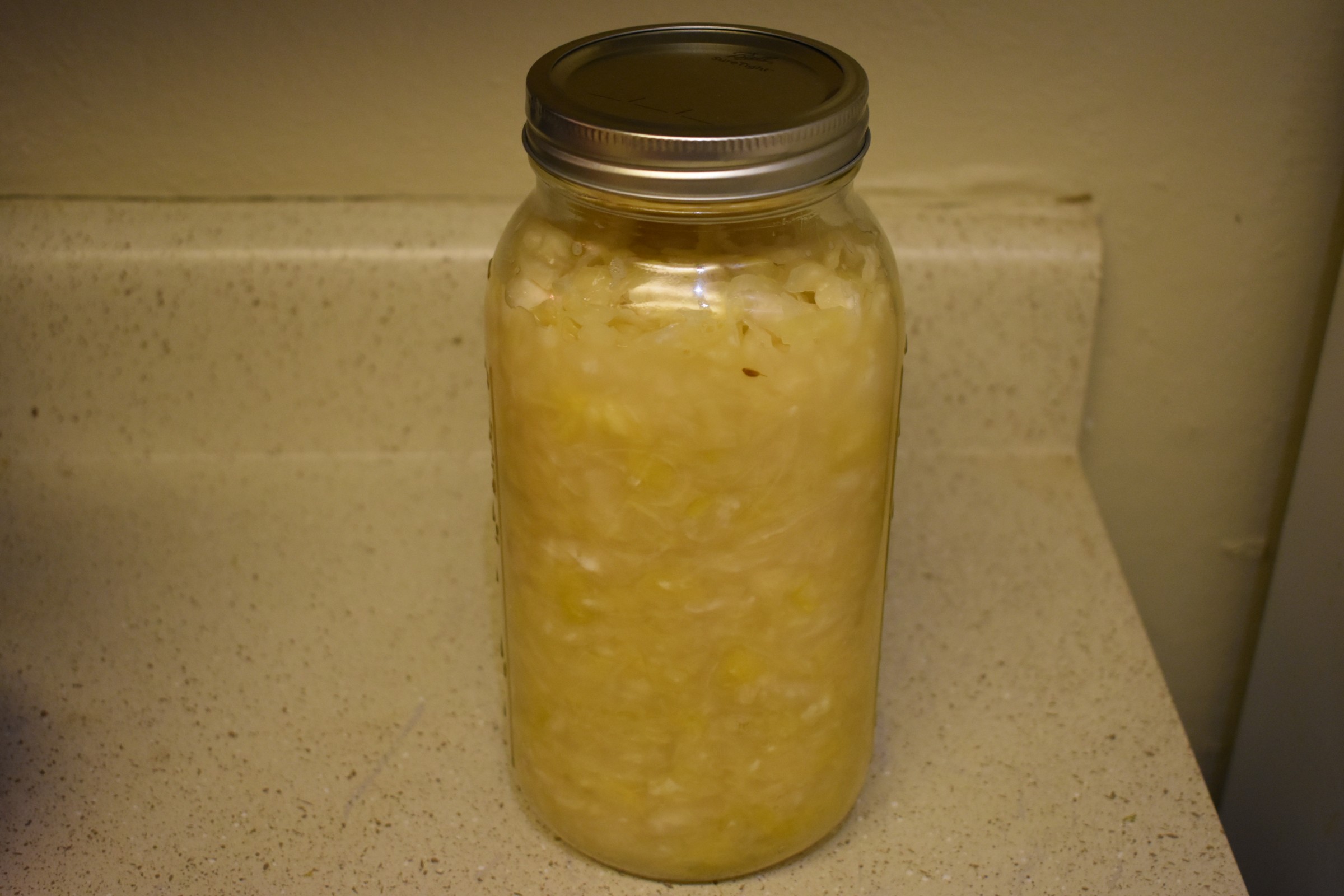How to Make Sauerkraut: Traditionally Fermented Cabbage
by Admin
Posted on 17-10-2023 05:21 PM

Traditionally made from cabbage and a saltwater brine, sauerkraut is fermented for several weeks.
 Homemade sauerkraut is amazing and doesn’t resemble store bought at all, plus it’s
easy
and cheap to make and filled with probiotics. Let’s make homemade fermented sauerkraut!.
Homemade sauerkraut is amazing and doesn’t resemble store bought at all, plus it’s
easy
and cheap to make and filled with probiotics. Let’s make homemade fermented sauerkraut!.
The word sauerkraut means "sour cabbage" in german; it's naturally fermented cabbage. Natural fermentation is one of the oldest means of food preservation and it reduces the risk of foodborne illness and food spoilage.
Traditional sauerkraut is different from canned and store-bought kraut because it is never heated. It uses a brine of natural juices from the cabbage and salt – never vinegar. The ingredients for fermented sauerkraut vary from recipe to recipe. Green cabbage is the most common ingredient (but red can also be used). Some recipes like to add spices, and you are more than welcome to mix and match based on your taste but for us, we go super simple in this recipe and include only 3 ingredients that will still produce the delicious classic sauerkraut taste. The only equipment you need is a fermenting jar (or fermenting lids for mason jars).
Wondering what type of fermenting container to use for your homemade kraut? here are a few of my favorite options: crocks: traditionally sauerkraut was made in large crocks with a weight to keep the cabbage below the brine. This is still a great way to make a ton of kraut at once. Mason jars with weight: probably the easiest way to make a small batch of sauerkraut is to pack it into a mason jar and keep the shredded cabbage below the brine with a weight. If you’re a beginner, a small jam jar filled with water works as a weight in a wide-mouth mason jar.
How to Make a Gallon of Mead: A Simple Mead Recipe
Any sauerkraut recipe is incomplete without this step. The cabbage must be completely submerged underneath a brine and away from oxygen for the lactic acid bacteria to proliferate. This is important for protecting your lactic acid fermentation from unwanted bacteria (or mold). The main reason we see sauerkraut fermentations fail is because of the addition of oxygen to the ferment, which can lead to the growth of undesirable bacteria as well as funguses and molds.
 These can render the entire batch inedible. After extensive testing, we've come up with a couple of our favorite ways to keep your sauerkraut safe.
These can render the entire batch inedible. After extensive testing, we've come up with a couple of our favorite ways to keep your sauerkraut safe.
Sauerkraut Ingredients and Equipment
Having the proper equipment for canning sauerkraut is just as important as the ingredients. No heavy equipment or fancy tools are necessary to make this culinary creation. Some of the items on the equipment list are purely a suggestion and can easily be substituted by other more commonplace household items. Clean the cabbage and tear away any wilting leaves. For five pounds, you will use about 2-3 heads of cabbage. Remove cores from the cabbage heads, then slice into fine, tiny shreds. Using a cutting tool like mandolins or a food processor will speed up this step. If you do not have either of those in your kitchen, shredding the cabbage with a knife will suffice.
Learn to make raw sauerkraut that is filled with probiotics. This tangy and crunchy condiment can be made at home in a few days with 2 ingredients. Making your own raw sauerkraut at home is simpler than you might think. You don’t need fancy equipment, just a few simple ingredients. So ditch the store-bought stuff and make your own, which will save you money in the long run.